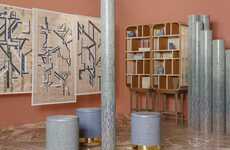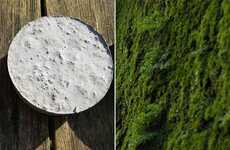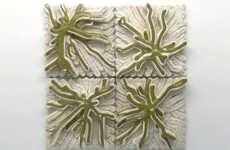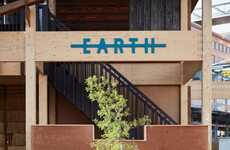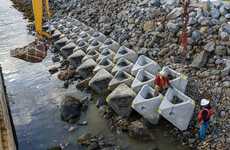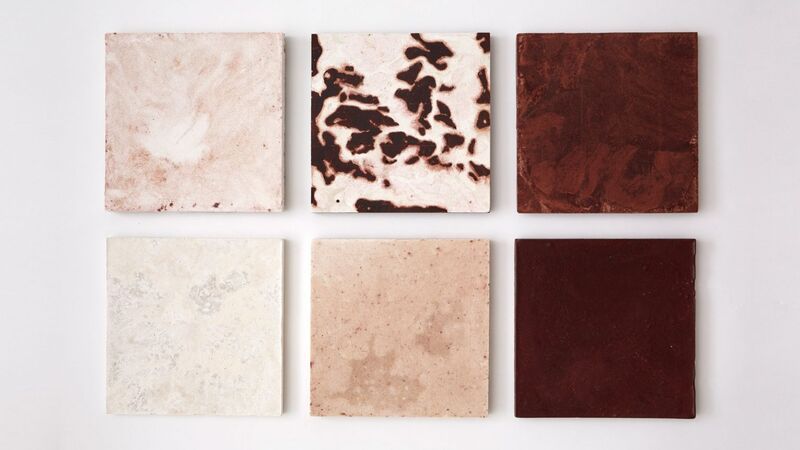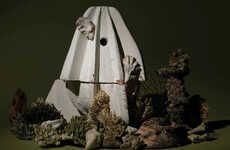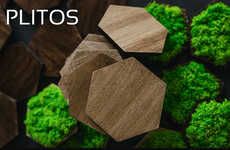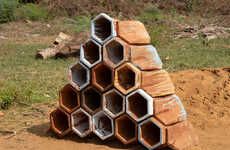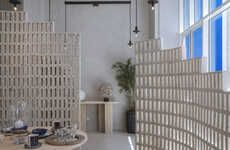This Bio-Concrete is an Economic and Ecological Solution to Invasive Species
Elena Rahman — April 16, 2021 — Eco
Brigitte Kock and Irene Roca Moracia are the researchers behind bio-concrete tiles. Their collaboration uses Japanese knotweed and shells from American signal crayfish—both of which are invasive species—to form eco-friendly and beautifully designed tiles.
The material is highly malleable and can take on a variety of desired shapes, textures, and colors. Knotweed and American signal crayfish are among the most invasive, ecologically, and economically damaging in the UK. Kock and Moracia's bio-concrete tiles add value to the biological material and act as an incentive to restore local biodiversity.
Typically, concrete is a major carbon emission culprit. This innovative concrete alternative, commissioned by LVMH Group, sets out to create a substitute for ecologically harmful building materials, like concrete. LVMH Group counts Dior and Louis Vuitton among its brands and anticipates using bio-concrete tiles for luxury store interiors.
Image Credit: Dezeen.com
The material is highly malleable and can take on a variety of desired shapes, textures, and colors. Knotweed and American signal crayfish are among the most invasive, ecologically, and economically damaging in the UK. Kock and Moracia's bio-concrete tiles add value to the biological material and act as an incentive to restore local biodiversity.
Typically, concrete is a major carbon emission culprit. This innovative concrete alternative, commissioned by LVMH Group, sets out to create a substitute for ecologically harmful building materials, like concrete. LVMH Group counts Dior and Louis Vuitton among its brands and anticipates using bio-concrete tiles for luxury store interiors.
Image Credit: Dezeen.com
Trend Themes
1. Bio-concrete - The use of bio-concrete in place of traditional concrete has the potential to reduce carbon emissions and provide an eco-friendly alternative to harmful building materials.
2. Sustainable Design - The integration of eco-friendly materials like bio-concrete into design practices presents an opportunity to promote sustainable design and encourage biodiversity.
3. Invasive Species Repurposing - Repurposing invasive species like Japanese knotweed and American signal crayfish into eco-friendly building materials can not only combat their ecological and economic damage but also generate value and promote sustainability.
Industry Implications
1. Construction - The construction industry can benefit from using bio-concrete as a sustainable and eco-friendly alternative to traditional building materials like concrete.
2. Interior Design - Interior designers can incorporate bio-concrete tiles into sustainable design practices to reduce environmental impact and promote biodiversity.
3. Home Decor - Innovative home decor companies can capitalize on the trend of eco-friendly and sustainable designs by incorporating bio-concrete tiles in their product offerings.
5.7
Score
Popularity
Activity
Freshness
